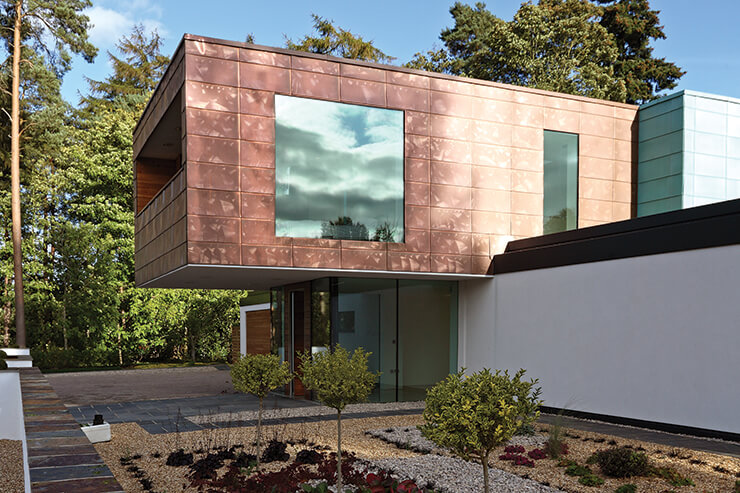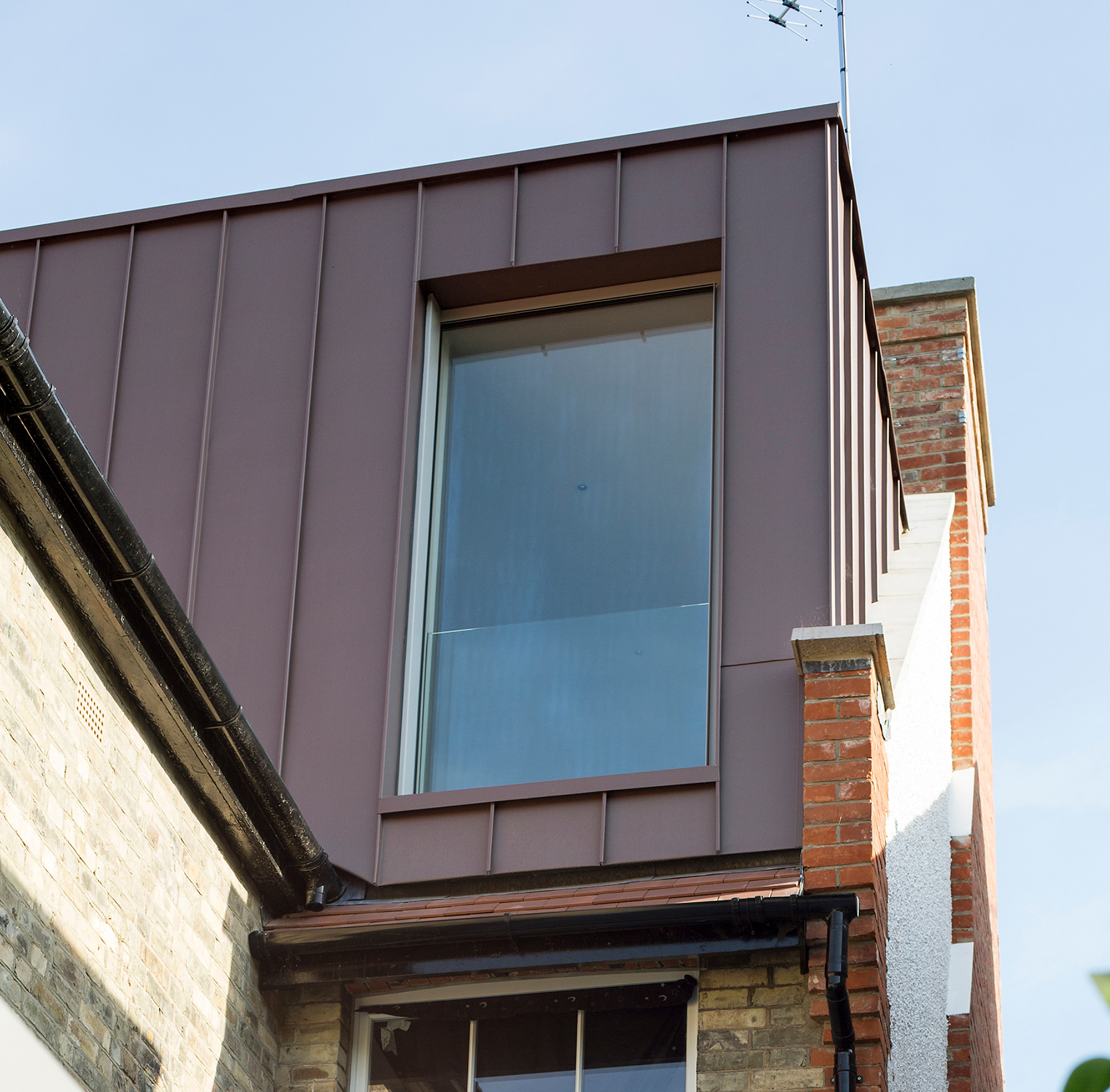Whatever type of project you’re working on – whether self-build, renovation, extension or conversion – using metal cladding gives you the chance to achieve a highly individual design.
Available in a wide range of materials, profiles and colours, it’s a fantastic choice for contemporary schemes but also fits the bill for a variety of traditional projects – barn conversions being one of the most notable.
Metal cladding can be laid vertically, horizontally or diagonally to suit your tastes, and is even capable of being applied to curved facades and a variety of unusual shapes. It’s available in a range of corrugated and other profiles, or can be laid flat as part of a panelised installation for an ultra-modern effect.
What’s more, it works fantastically alongside a whole host of cladding materials – including render and timber.
Choosing a metal
There are four key materials to choose from: steel, aluminium, zinc and copper. Modern production techniques mean that metals can be pre-aged, coated to preserve the original shine or supplied in a huge range of painted and powder-coated hues according to your preference.
But there’s more to consider than simply the metal and finish – the profile shape and jointing type can have a surprising effect on the perceived colour and texture of your cladding, for example.
If possible, ask to see some examples of your preferred option in situ – and try to view the surface at different times of the day in order to get an accurate picture of what the end result will be like.
If you’re using external fasteners to attach the cladding, be sure to select robust fittings that suit the look you’re going for – colour-matched versions with plastic heads are a common choice. Here’s what you can expect from the major metal finishes:

This contemporary home by Nicolas Tye Architects features a cantilevered box clad in KME Tecu, which is made using 100% recycled copper
Steel cladding
This is usually supplied hot-dip galvanised (typically with zinc or a zinc-aluminium alloy) to provide a robust finish. It’s available in a huge range of colours and effects, from high-gloss reflective surfaces to pretty much any factory-painted hue.
Steel is probably the most affordable metal cladding in terms of up front costs and offers a good life expectancy of 35+ years, but it’s not quite as durable as the other metals.
Aluminium Cladding
Steel’s main rival is an extremely lightweight material, which can help to minimise loads on the building and potentially reduce your outlay on foundations.
As aluminium’s surface oxidises it produces a hard, dense protective layer that prevents corrosion, giving this cladding a lifespan of 40 years or more. Coatings can be added to further enhance its natural qualities or to achieve the colour and finish you desire.
Zinc Cladding
Boasting a silvery aesthetic when freshly installed, which weathers to an attractive lead-like hue over time if left untreated, zinc is a highly durable surface.
It can easily achieve well over 50 years of service thanks to the protective patina it cultivates. As well as its natural greyish hue, it’s also available in a pre-weathered black finish.

This loft conversion in north west London is the work of Carver Farshi, a partnership between Studio Carver and Daniel Farshi Architects. The designers chose red zinc cladding to complement the Edwardian home’s heritage clay tiles. The large, sliding glass window provides expansive views of the surroundings. |
Copper Cladding
This elegant metal is prized for its ability to develop a self-protecting and virtually maintenance-free verdigris patina that ensures a long lifespan of 100 years or more.
If left to age, copper will mellow from bright golden-bronze tones through dark browns to a characteristic blue-green finish.
New products include mesh-style claddings with colour-preserving coatings that can create a highly individual look.
The post Metal Cladding Options Explained appeared first on Build It.
Article reference Metal Cladding Options Explained
No comments:
Post a Comment